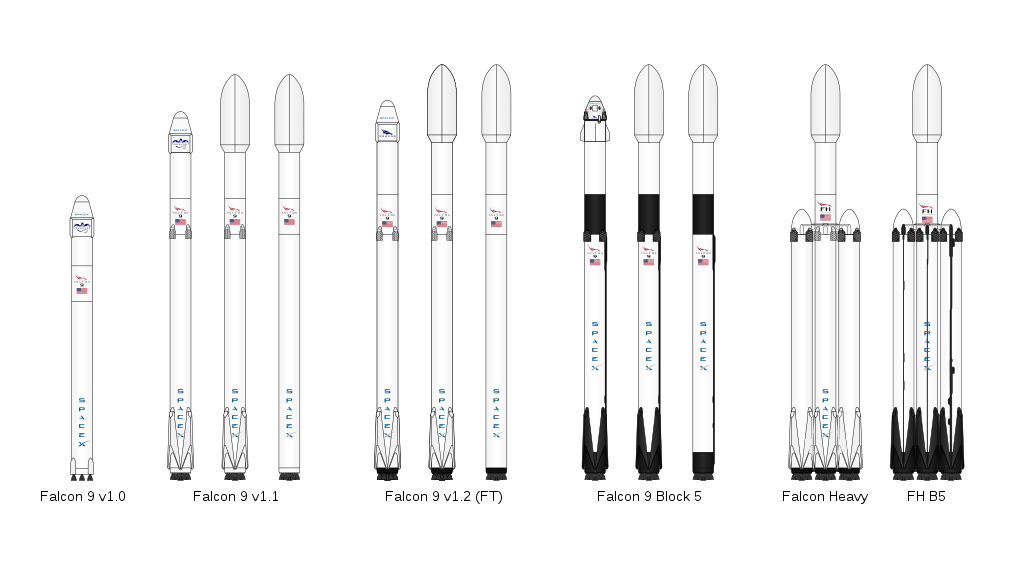Falcon Rockets
SpaceX, make Falcon rockets. SpaceX is a private American aerospace company. They carry out missions for NASA, the USA military, and commercial companies.

(based on work of Markus Säynevirta and Craigboy and Rressi)
CC BY-SA 4.0
The first Falcon 9 rocket launched in 2010. Since then, rockets from the Falcon 9 family have launched over 100 times. Falcon 9 rockets are medium-lift rockets. This means they can launch large objects like satellites into 'low Earth orbit'. 'Low Earth orbit' is an orbit that is quite close to Earth. Usually less than 1000 km from the Earth's surface.
Falcon 9 rockets are made of two sections, called stages. Both stages are powered by SpaceX Merlin engines. The engines use liquid oxygen and rocket-grade kerosene as fuel. The first stage re-enters the Earth’s atmosphere after launch. This means parts of the rocket can be used again.
The Falcon Heavy is a heavy-lift system designed to carry people into space. However, SpaceX no longer intends to use the Falcon Heavy as part of its crewed flight program. Falcon Heavy rockets have been used to launch satellites into orbit. They have even (as part of a test flight) launched a Tesla car and mannequin passenger to Mars!
Each Falcon Heavy has a central rocket based on a strengthened Falcon 9. It also has 2 Falcon 9s strapped on to act as additional booster rockets. After launch, the 3 booster rockets return to Earth and can be used again. The Falcon Heavy rocket is 70 m tall and can carry more than 63,000 kg to low Earth orbit. It is currently the most powerful rocket in operation. But, it is not as tall or as powerful as Saturn V rocket which carried people to the Moon.
SpaceX uses the Cargo Dragon and Crew Dragon spacecraft for transporting cargo, astronauts, and tourists to space. They are reusable. This means they can launch, orbit, and return to Earth many times. The Dragon spacecraft launches on top of a Falcon 9 rocket. The Dragon capsule returns to Earth by splashing down in the ocean.
The Crew Dragon first took astronauts to the International Space Station (ISS) in August 2020. The Dragon 2 spacecraft can dock onto the ISS autonomously. This means that a person doesn’t have to guide it into place.

